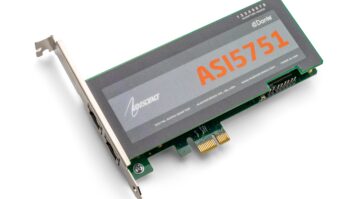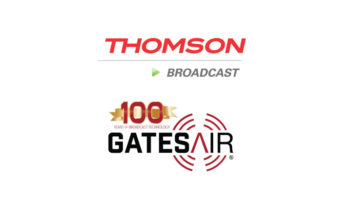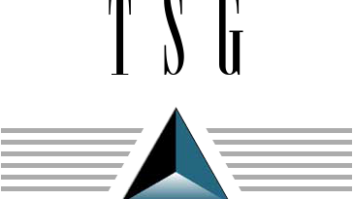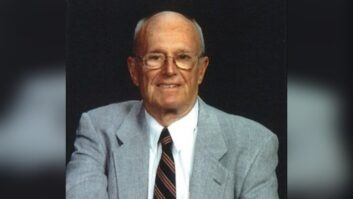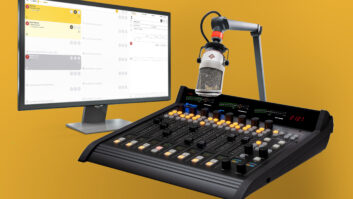PHILADELPHIA Ibiquity Digital Corp. is focused on getting HD Radios to market and regaining momentum for digital conversion at stations.
At the same time, a leader of the body that develops standards for IBOC says that if stations should fail to transition, he fears terrestrial radio eventually may migrate to a new band – one in which frequency allocations would be auctioned.
Ibiquity executives say approximately 280 radio stations encompassing more than 100 markets have licensed the company’s technology. Roughly 55 are on the air with an HD Radio signal, said Ibiquity President and Chief Executive Officer Robert Struble. He made the comments during the NAB Radio Show in Philadelphia.
The company believes it’s well on its way to licensing 300 stations by the end of the year.
Ibiquity has identified six cities as launch markets for the consumer rollout – New York, Los Angeles, Chicago, San Francisco, Miami and Seattle. In each, 10 to 18 stations have licensed the technology.
Stations in 35 states as well as the District of Columbia and Puerto Rico have committed to HD Radio.
Struble said the company started taking receiver orders before the NAB Radio Show for stations on the air with a digital signal that want one of the first 1,000 Kenwood HD Radio receivers. He said Ibiquity has those receivers, which incorporate the new HDC codec software.
Aftermarket units first
Ibiquity is selling the receivers to broadcasters for $399 each. Broadcasters need a compatible Kenwood head unit to hear the digital programming.
Looking towards 2004, JVC and Panasonic have early launch plans for aftermarket HD Radios, said Struble. Kenwood plans a limited launch in the fourth quarter of this year and will be ready to ship to retailers in January.
Delphi plans to have in — dash HD Radios next year in 2005 model — year cars. The company plans to begin production of HD Radios in the first quarter of 2004.
There is consumer demand now for digital radio, said Robert Schumacher, business line executive for Delphi’s Wireless Division, who also spoke during the NAB convention. He said satellite radio is creating that interest. “Delphi has shipped over 1.1 million digital radios” to retailers, he said.
Poor reception is the most common complaint in vehicle audio systems, he said, adding that radio manufacturers interested in HD Radio believe the technology virtually eliminates reception problems due to such issues as multipath interference and ignition noise.
Kenwood, Yamaha and JVC are developing home radios.
“It’s all about the speed of the receiver uptake now,” said Struble, regarding Ibiquity’s plans.
But while it’s trying to go forward, company executives are still answering questions from the industry about its new codec, the layoffs this summer and its financial needs.
Of the codec switch, Struble said, “It’s a strange example of how the process is supposed to work. We took feedback from the industry about what they wanted. Sometimes the process is loud and messy, but it works,” he said of Ibiquity’s decision to drop PAC and adopt a new, proprietary codec, HDC.
Sirius, meanwhile, intends to continue using Ibiquity’s PAC codec; in fact, some members of Ibiquity’s former PAC team of about eight people now work for Sirius. The satcaster says it has “enhanced the engineering staff to incorporate coder development” in its abilities, giving the satellite radio company “more flexibility and more control” over the direction of that coder development.
Ibiquity lost critical time to market and expense trying to integrate PAC into its system after it merged with Lucent Digital Radio, broadcast sources said.
Layoffs this summer reflected the rollout delay caused by the codec switch, Struble said. There are no plans for more layoffs, he said.
The reductions also reflected the changing nature of the company’s needs. Struble said development of the technology is largely complete and that Ibiquity now needs to focus on working with its 18 receiver manufacturing partners to get radios to store shelves. The technical expertise the company needs now is more in technology transfer than design, he said.
Earlier reports that the company had spent roughly $30 million last year were inflated, Struble said. He and other broadcast sources said the figure was lower. Ibiquity is a private company and declines to release spending figures.
The company has sufficient cash on hand to last another year, said Struble. Other broadcast sources said the layoffs stretched the funds on hand to ensure this, and that Ibiquity is still looking to broadcasters as well as its current financial backers for more investment.
Kudos for codec fix
Key to getting that funding is proving to investors that the new codec works. After recent demos, key National Radio Systems Committee members believe Ibiquity has resolved the issue. The group had suspended standard-setting efforts for IBOC this spring due to a problem with the audio quality of PAC on AM at low bit rates, an issue for stations that want to include data services with their digital programming.
Ibiquity recently resolved the problem, and standard-setting for digital radio has resumed. NRSC Chairman Charlie Morgan gave the technology developer kudos for handling the codec issue quickly.
He urged major-market broadcasters to convert their stations to digital and not wait until receivers are widely available.
“Without broadcasters taking the lead and investing in IBOC installations, I fear that IBOC may become stalled or simply die a slow death,” said Morgan. If that happens, he cautioned, “I believe we will see some form of new-band terrestrial radio. Possibly these new facilities will be sold at auction. Existing broadcasters will have no assurances that they will have the same role in this new service that they have today.”
AM performance of IBOC at night remains an issue. Morgan said the NRSC didn’t have enough information to know how a station transmitting a digital signal might affect its neighbor; that’s why, he said, the FCC has only allowed AMs to use IBOC during the day in its interim authorization.
While protection ratios for analog or digital won’t change with nighttime operation, the amount of interference increases due to skywave propagation. The phenomenon occurs after sunset in the AM band when signals bounce off layers of Earth’s atmosphere, traveling hundreds or thousands of miles.
Skywave reception of so — called clear — channel stations will probably go away if digital radio becomes widely used by stations at night, Morgan said.
Ibiquity has conducted additional tests to help define the extent of this additional interference and plans to submit those soon to NAB committees working on the AM issue, said Morgan and Struble.
Shortly after the show, NAB Director of Advanced Engineering David Layer, who serves as the NAB staff person on the NRSC, said the committee thinks the FCC would issue a second notice about IBOC in 2004, with details about how stations may implement the service.
Dual inputs
Also at the NAB radio convention, Electronics Research announced it has completed a working prototype of a dual-input, side-mounted FM antenna designed for FM IBOC applications.
ERI says the antenna is capable of transmitting both the analog and digital FM signals without requiring a high-loss hybrid combiner or the use of a circulator to attain the required isolation between the digital and analog transmitters.
The company says the design meets the current FCC requirement for informal notification of IBOC implementation. Stations must use a single antenna for IBOC implementation and include verifying information in their notification to the commission that they’ve converted. The company says the product is a true dual-input antenna that excites all the radiating elements with both analog and digital signals.
ERI says the design allows the use of a single antenna while eliminating the combining loss present with the 10-dB hybrid combining method.
A beta test is in the works for a Greater Media facility. ERI expects production models of the antenna to be available by the second quarter of 2004.
Greater Media Vice President for Radio Engineering Milford Smith called the development “the killer app” in terms of being able to implement HD Radio in a cost-effective way.
Precise implementation details were not available at press time. ERI said it has patents pending on the antenna.
Vendors with HD Radio equipment on the show floor reported heavy interest in the practical nuts and bolts of digital radio implementation.






